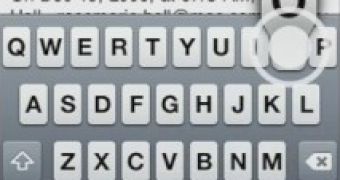Much has been written about the iPhone's keyboard and many have predicted gloom and doom over the lack of a physical one and the lack of a 'tactile' feeling has been submitted time and time again as the reason that the iPhone will fail. Truth be told, even the most enthusiastic of the iPhone buyers had little to no idea of what using the keyboard would actually be like and there were not that many demos of people actually using it for anything but the shortest messages. Just hours before the iPhone launch, Apple has posted a new video that explains the keyboard and some of the previously unknown features that make it work so well.
While 'tactile feel' might be important for standard 'dumb' keyboards, it pales in comparison to what the iPhone's keyboard does on the fly. Predictive typing is not something new and even the simplest of phones use it, the main improvement that the iPhone brings to the table is that besides the dictionary, it also takes into account the location of the keys. In the video example, typing 'ouzza' on an iPhone would have it recommend 'pizza' as a suggestion, simply because of the locations of the misplaced P and I when compared to O and U. The iPhone even goes as far as to analyze the contents of your address book and properly identify and suggest names of the people you know.
Another improvement is that the keyboard automatically resizes the area of the keys based on possible matches of what you have typed so far. In the case of the word "time" typing in "tim" would thus make the E key large, large enough to override both R and W, since there are no common words that contain such a combination of letters. While the display shows the E key as having the same size as before, you will not be able to accidentally press W or R.
Last but not least, the keyboard was designed to blend in with the flow and needs of typing. Suggested words are accepted using the Space Bar, which makes a lot of sense considering that you will be using the key anyway at the end of the word and the software is smart enough to identify the vast majority of mistakes and correct them. Similarly, the layout of the keyboard changes depending on the application, with keys disappearing and new ones taking their place. You don't need spaces when typing URLs, but you will need slashed and dots.

 14 DAY TRIAL //
14 DAY TRIAL //